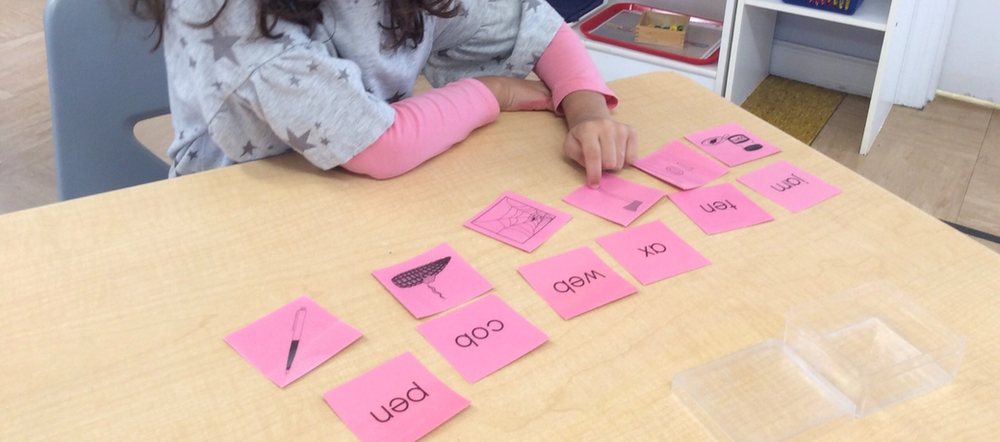
Legend has it that, when Dr. Montessori sought to translate her original design for reading materials from phonetic Italian to the much less predictable English, she engaged two of her English students, Margaret Humphrees and Phoebe Childs, to create a system which would both reflect the qualities of the Montessori materials and be appropriate for English-speaking children.
The initially challenging task was met with a surprisingly simple solution: start phonetically and add the exceptions to phonetic rules after the child had already established some competence in reading. The Pink Series, our initial reading material, holds the same qualities as other Montessori materials: It is self-correcting. concept-isolating and didactic. Children who can identify the sounds of even a few letters can begin reading simple, three letter phonetic words. With time and practice, the challenge expands to include phonetic words of four or more letters. Don't be fooled: they're not easy. While the pink series will include words like "cat" and "pot," the more advanced blue series will included longer words like "pelican" or "umbrella." Eventually, and using familiar procedures from the phonetic materials, children will add in nonphonetic words.
Here, the child is reading three-letter phonetic labels and placing them under the images they describe. Using the large card of images helps to make the material manageable for early readers. As they advance, they'll use images and labels that can be mixed and matched in larger sets, but for now, the six images provide a built-in control of error. If the child mislabels any picture, she'll be left at the end of the work with a label that doesn't match the remaining image, and will know to search for her own mistake.
While the child only needs to have an initial lesson with the cards, there are many cards available to practice and explore. One simple initial lesson opens the material for the child to choose independently… and we know children who are motivated to learn to read will choose these materials over and over and over again as they build mastery.
You may notice, at home, that your child is interested in writing but not yet interested in learning to read. Don't fret: these are different skills and emerge at different times for children, with writing typically preceding reading. Your child may want to know how to spell his or her name or ask to write lists or labels but not yet be able to read the same. In our classrooms, you'll often see children building words with the moveable alphabet before they begin the Pink Series. Think of reading and writing as complementary, but not dependent skills. In supporting both, model high quality language. Avoid baby-talk or using childish vocabulary with your child. Model listening carefully to his or her responses and engage your child in conversation. Read to your child and let your child see that you read for pleasure as well.
#Language #ForParents #ForTeachers #FirstPlane #Primary #Curriculum
